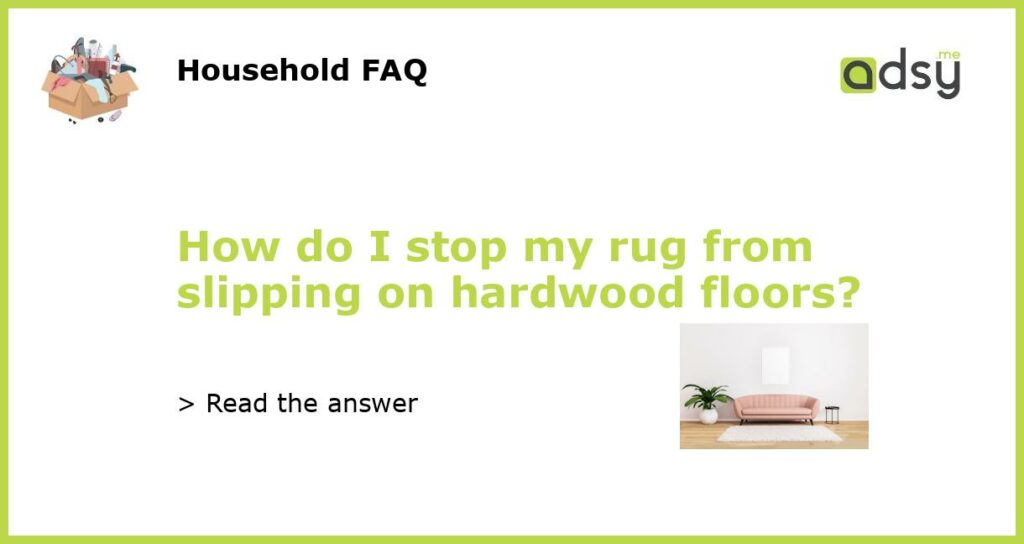1. Use a non-slip rug pad
Anyone who has a rug on a hardwood floor knows how annoying it can be when the rug constantly slips and slides. Not only can it be a safety hazard, but it also makes the room look messy and unkempt. Luckily, there are several ways to prevent this from happening. One of the most effective solutions is to use a non-slip rug pad.
A non-slip rug pad is a thin pad that is placed between the rug and the floor. It is designed to grip both surfaces and provide traction, which prevents the rug from sliding. There are different types of rug pads available, including ones made from rubber, foam, and felt. Rubber pads are the most commonly used as they are durable and provide the best grip.
Apply double-sided rug tape
If you don’t want to use a rug pad, another option is to apply double-sided rug tape. This adhesive tape is specifically designed for rugs and works by sticking the rug to the floor, preventing it from sliding. To use this method, simply cut the tape into strips and place them along the edges and corners of the rug. Make sure to press the rug firmly onto the tape to ensure it stays in place.
Double-sided rug tape is a great temporary solution, especially if you need to move the rug frequently. However, it may leave behind residue on the floor when removed, so it’s important to test it on a small corner of your floor first to make sure it won’t damage the surface.
3. Use a non-slip rug spray
If you prefer a less invasive option, you can try using a non-slip rug spray. This product is typically a liquid that can be sprayed onto the back of the rug to provide traction. Once it dries, it creates a grip that helps prevent the rug from slipping. Non-slip rug sprays are easy to use and can be effective on a variety of surfaces, including hardwood floors.
To use a non-slip rug spray, simply turn the rug upside down and spray an even coat on the backside. Allow it to dry completely before placing the rug back on the floor. It’s important to note that some rug sprays may not be suitable for certain types of rugs, so always check the product label for compatibility.
4. Opt for a rug with a rubber backing
If you’re in the market for a new rug, consider choosing one with a rubber backing. Rubber-backed rugs are specifically designed to provide grip on smooth surfaces and are less likely to slip on hardwood floors. The rubber backing acts as a natural non-slip surface, making them a great option for high-traffic areas or homes with pets and children.
When shopping for rugs with rubber backing, look for ones that have a solid and thick rubber layer. This will ensure that it provides adequate traction and won’t wear out easily over time. Additionally, make sure to follow the manufacturer’s care instructions to prevent any damage to the rubber backing.
Clean the floor and rug regularly
One of the main reasons rugs slip on hardwood floors is due to the accumulation of dust, dirt, and debris. These particles create a slippery surface, making it easier for the rug to slide. To prevent this from happening, it’s important to clean both the floor and the rug regularly.
Start by sweeping or vacuuming the floor to remove any loose dirt or debris. Pay extra attention to the areas where the rug is placed. Once the floor is clean, lift the rug and shake it outside to remove any trapped dirt or dust. If the rug is small enough, you can also give it a good shake indoors.
In addition to regular cleaning, consider using a rug cleaner or spot treatment to remove any stains or spills that may make the rug slippery. Remember to always read the manufacturer’s instructions before using any cleaning products on your rug.






